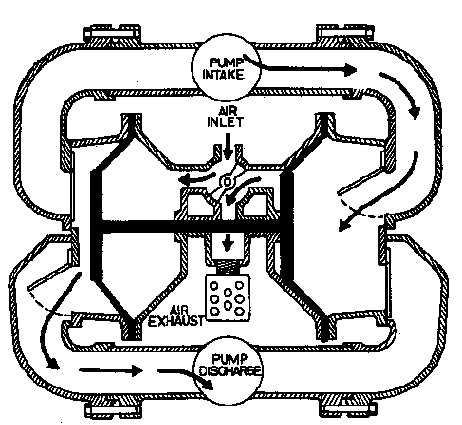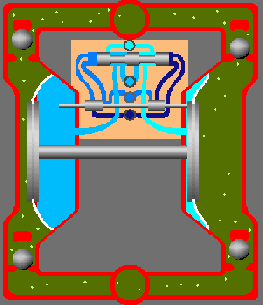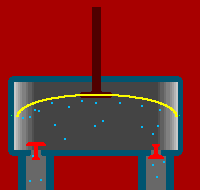Diaphragm Pump
The diaphragm pump has been developed for handling corrosive liquids and those containing suspensions of abrasive solids. It is in two sections separated by a diaphragm of rubber, leather, or plastics material. In one section a piston or plunger operates in a cylinder in which a non-corrosive fluid is displaced. The movement of the fluid is transmitted by means of flexible diaphragm to the liquid to be pumped. The only moving parts of the pump that are in contact with the liquid are the valves, and these can be specially designed to handle the material. In some cases the movement of the diaphragm is produced by direct mechanical action, or the diaphragm may be air actuated.

Pneumatically actuated diaphragm pumps require no other power source other than plant compressed air. This is of course limited to the available air pressure. Because of the slow speed and large valves, they are well suited to the gentle handling of liquids for which degradation of suspended solids should be avoided.
By virtue of their construction, diaphragm pumps cannot be used for high pressure applications. A major consideration in the application of diaphragm pump is the realization that diaphragm failure will occur eventually.
Diaphragm pumps handle small to moderate amounts of liquid, up to about 100 gal/min, and can develop pressures in excess of 100 atm.
The following figure shows the working of a double diaphragm pump.

Picture From www.animatedsoftware.com
Liquid inlet is from bottom to top.
The following is the action of single diaphragm pump.

Picture From www.animatedsoftware.com
